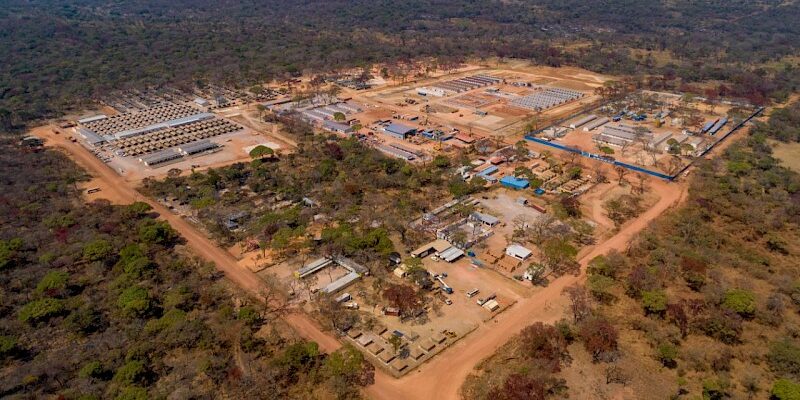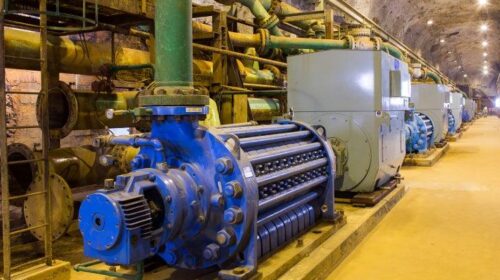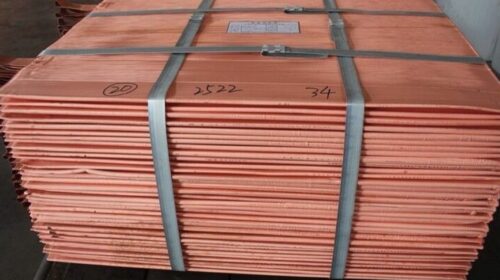Kamoa Discovery Team Ivanhoe | DRC
Key initial projections from the Kakula 2020 DFS
The study evaluates the development of a stage one, 6-Mtpa underground mine and surface processing complex at the Kakula Deposit of 7.6 Mtpa, built in two modules of 3.8 Mtpa, with the first already under advanced construction. The first module of 3.8 Mtpa commences production in Q3 2021, and the second in Q1 2023. The life-of-mine production scenario provides for 110 million tonnes to be mined at an average grade of 5.22% copper, producing 8.5 million tonnes of high-grade copper concentrate, containing approximately 10.8 billion pounds of copper.
The economic analysis uses a consensus, real long-term copper price of US$3.10/lb. (excluding inflation) and returns an after-tax NPV at an 8% discount rate of US$5.5 billion. It has an after-tax IRR of 77.0% and a payback period of 2.3 years.
The estimated remaining initial capital cost, including contingency, is US$0.65 billion from July 1, 2020. The capital expenditure for off-site power, which is included in the remaining initial capital cost, includes advances to the DRC state-owned electricity company, Société Nationale d’Electricité (SNEL), to upgrade two hydropower plants (Koni and Mwadingusha) to provide the Kamoa-Kakula Project with access to clean electricity for its planned operations. The hydro-power upgrading work is being led by Stucky Ltd., of Renens, Switzerland, and the advance payments will be recovered by Kamoa-Kakula through a reduction in the power tariffs paid.
Aerial picture of the Mwadingusha hydro-electric dam and power plant, with the new installed penstocks. Mwadingusha will soon be delivering 72 megawatts (MW) of clean, sustainable hydro-electricity to the national grid. The Kakula Mine is scheduled to be energized with permanent, 220-kilovolt (kV), hydro-generated power from the national grid in early 2021.
Expanded 19-Mtpa development scenario for the Kakula and Kamoa deposits
The Kamoa-Kakula 2020 PEA also assesses an additional development option of mining several deposits on the Kamoa-Kakula Project as an integrated, 19-Mtpa mining, processing and smelting complex, built in multiple stages. This scenario envisages the construction and operation of three separate mines: first, an initial 6-Mtpa mining operation would be established at the Kakula Mine on the Kakula Deposit; this is followed by a subsequent, separate 6-Mtpa mining operation at the Kansoko Mine, where two crews are working already; a third 6-Mtpa mine then will be established at the Kakula West Mine, in addition to a fourth initial mine in the Kamoa North area operating initially at 1 Mtpa. The processing plant is constructed in five modules of 3.8 Mtpa, with an ultimate capacity of 19 Mtpa.
As the resources at the Kakula, Kansoko and Kakula West mines are mined out, production would begin sequentially at five other mines in the Kamoa North area to maintain throughput of 19 Mtpa to the then existing concentrator and smelter complex, as illustrated in Figure 1.
Each mining operation is expected to be a separate underground mine with a shared processing facility and surface infrastructure located at Kakula. Material will be transported to the Kakula processing complex by a system of overland conveyors. Included in this scenario is the construction of a direct-to-blister copper smelter with a capacity of one million tonnes of copper concentrate per annum.
The Kamoa-Kakula 2020 PEA is preliminary in nature and includes an economic analysis that is based, in part, on Inferred Mineral Resources. Inferred Mineral Resources are considered too speculative geologically for the application of economic considerations that would allow them to be categorized as Mineral Reserves – and there is no certainty that the results will be realized. Mineral Resources do not have demonstrated economic viability and are not Mineral Reserves.
Ultra-high-grade drill core, comprised almost entirely of chalcocite, from a hole drilled at Kamoa North. Kamoa North is an important source of high-grade ore in Kamoa-Kakula’s expanded 19 Mtpa development scenario. Chalcocite has the greatest percentage of copper of all the common sulphide-copper-bearing minerals ─ almost 80% copper by weight.
![]()





